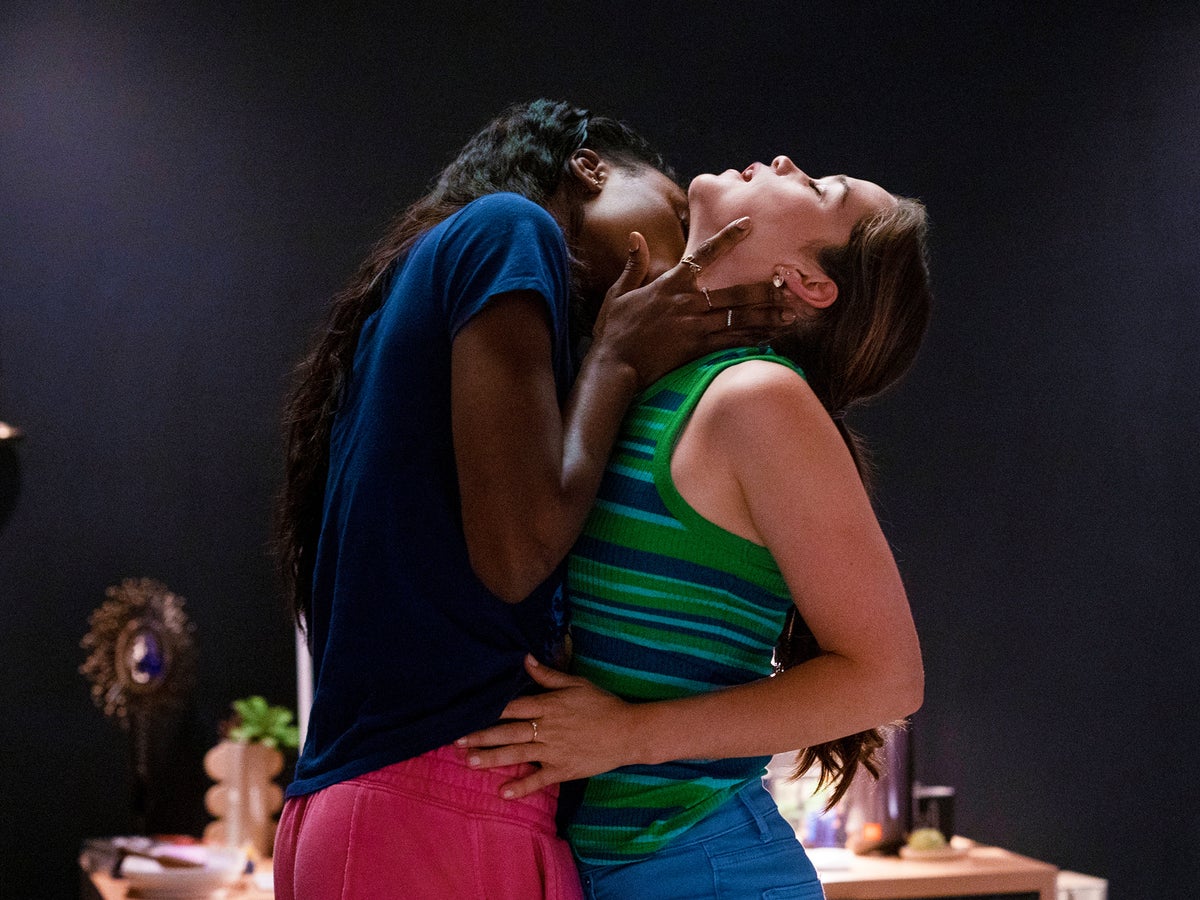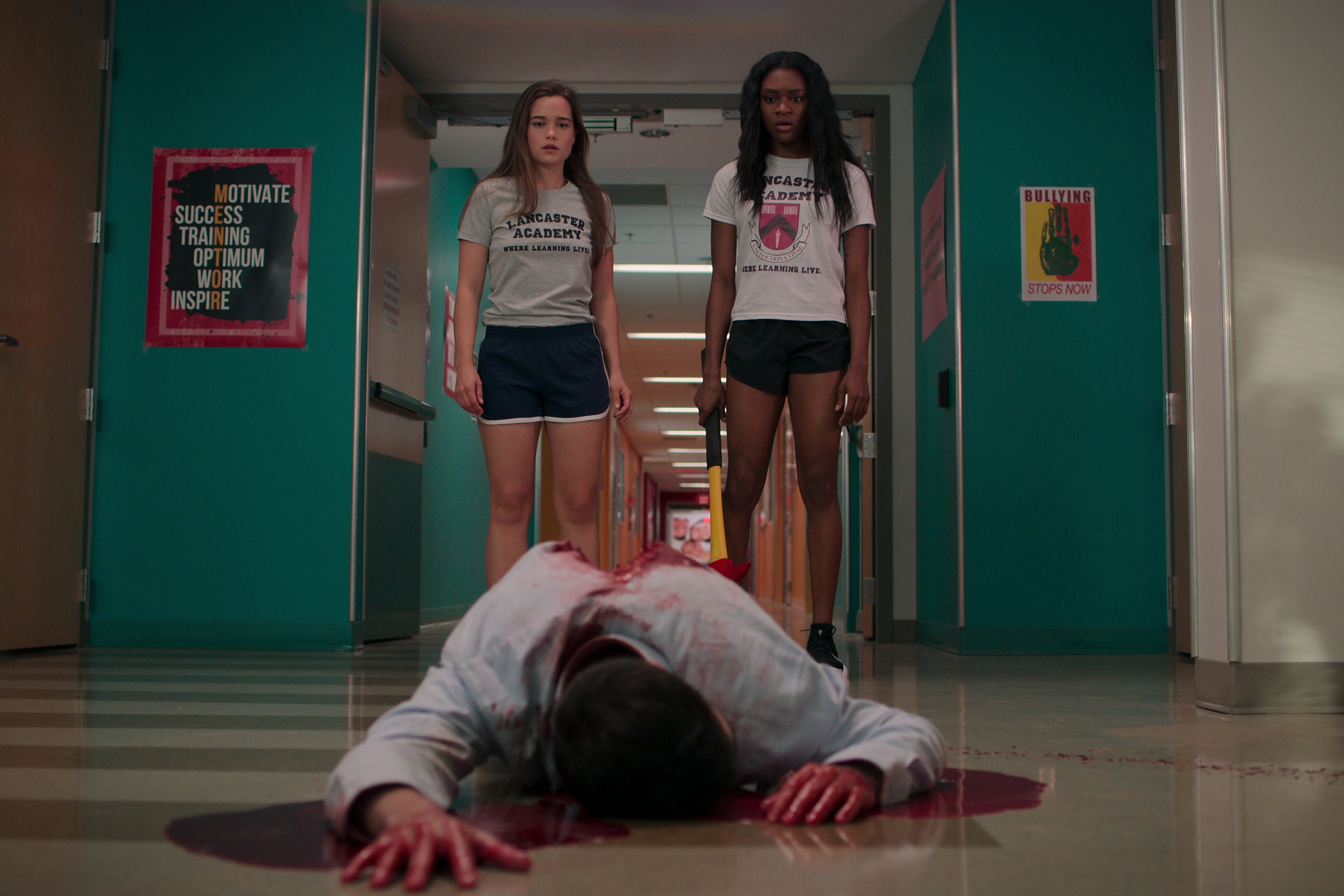
When the pair of teenage girls at the centre of First Kill have their first kiss – at a house party during a game of “Spin the Bottle” – their chaotic groping causes a jar of candy-red maraschino cherries to shatter across the floor. Juliette, played by Sarah Catherine Hook, is a young vampire who needs to drain a human’s blood to complete her transition to adulthood. Calliope – a slayer played by Imani Lewis – needs to stake her first bloodsucker to earn her family’s approval. The cherries are either a portentous metaphor or a vague innuendo. Or maybe someone just noticed them in a Netflix prop closet and thought it would look cool.
Since First Kill debuted earlier this month, the series has climbed to No 3 on the streamer’s global rankings (in some countries, such as South Africa, it’s No 1). On social media, fans have been organising viewing parties and rewatch sessions in the hope of pushing this camp supernatural drama toward a season two renewal. It’s that popular.
The series, created by fantasy author VE Schwab, doesn’t have the glossy cinematic polish we expect from a Netflix hit: the dialogue is dull, and its cut-rate CGI monsters would look out of place even on network TV. Then again, as far as pop culture’s concerned, few forces are more powerful than teenage girls.
Certainly most recent-ish vampire romances were created with them in mind. There’s Buffy the Vampire Slayer and its spin-off, Angel, as well as The Vampire Diaries and its two spin-offs, The Originals and Legacies. In British fantasy drama A Discovery of Witches, a vampire falls in love with a witch; in the Twilight movies, a vampire falls in love with an introvert. But at the core of these stories is a disconcerting relationship between a young woman and a dangerous man who – by dint of immortality – is always older. That he loves her when he could so easily kill her is a measure of his self-sacrifice. Vampire romance may be horny, but it’s also problematic.
Brilliantly, First Kill swaps out the controversial trope, which has long defined the genre. Here, our vampire is female. Juliette’s also an actual teenager and not just someone who has looked 17 years old for more than a century. The deceptively simple switch – which some will dismiss as a gimmicky stab at relevance – does more to transform the vampire story than any of the modest tweaks on vampire mechanics we’ve seen over the years. Twilight freed its crystal-skinned vamps from sleeping in coffins all day and True Blood’s synthetic blood serum freed them from “feeding” on humans. But First Kill liberates audiences from shipping a couple whose mismatched power dynamic would raise red flags in real life.
Schwab does borrow selectively from the retooled canon. Juliette can go to school in the daytime and, at least through adolescence, be sustained by blood capsules the size of a vitamin pill. For better or worse, First Kill also adopts the genre’s clunky, overwrought teen girl voiceover, though both Juliette and Calliope share monologuing duties.
The end result is less a “woke” vampire drama than an inclusive and uncreepy one. Instead of a dance between a monster and his prey, we get the story of two adolescent girls figuring out how to belong. It’s a quest for self-acceptance that has nothing to do with their sexuality. In fact, both girls are already out to their families: “I think I was queer from the womb,” the Romeo & Juliet-obsessed Calliope says. But both girls struggle with the violence their slayer/vampire identities demand of them; the thing that makes them so different from their high school peers and so similar to each other.

First Kill is not a great show or, if I’m brutally honest, even a good one. The world-building is slight; cherries fall symbolically only to be forgotten. But it is a teen vampire drama that teenage girls can love without reservation. It’s so easy to see how, with some more attention from Netflix, it could even become a show worth the efforts being made to save it.
‘First Kill’ is streaming on Netflix now







